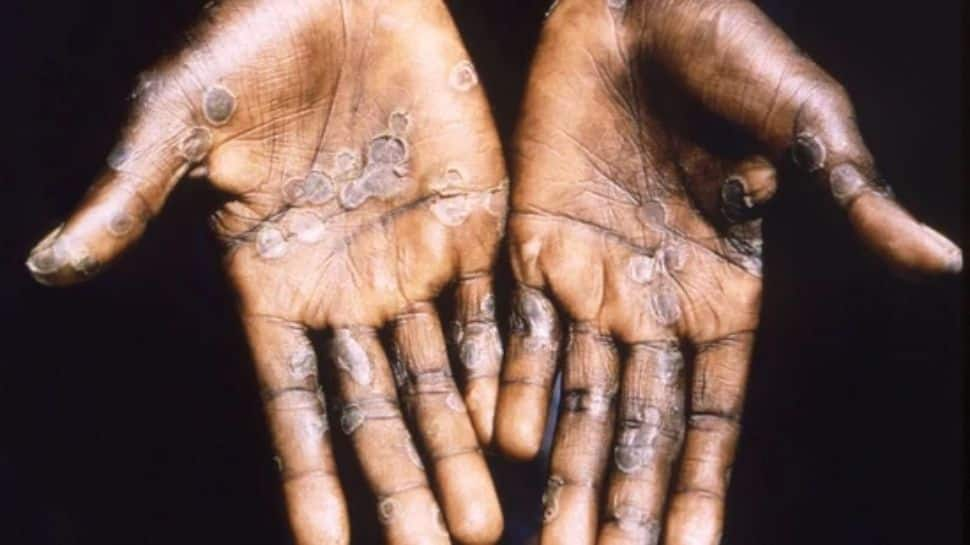New Delhi: The World Health Organisation (WHO) has declared the current monkeypox epidemic a global health emergency. The committee of independent advisers who met on Thursday (July 21 2022), were split on their decision on whether to call the growing monkeypox outbreak a public health emergency of international concern (PHEIC), the highest level of alert, however, WHO chief, Dr Tedros Adhanom Ghebreyesus, broke the deadlock. This is the first time the WHO director general has side-stepped his advisers to declare a public health emergency.
India reports the first case of the monkeypox virus in the national capital, which does not have an international travel history. Is it a community spread? Know all about the monkeypox outbreak here:
When was first case of monkeypox reported?
The first case of monkeypox was reported in a child in the Democratic Republic of the Congo (then Zaire) in 1970. Since then, outbreaks have generally been small and traceable to an individual who recently returned from a country where the virus is endemic, that is, countries in west and central Africa. But the current outbreak is unlike any previous one outside of Africa in that there is sustained person-to-person transmission of the infection.
How does monkeypox spread?
“There is a significant role of animals in the spread of monkeypox. Man and monkeys are both accidental hosts and wild rodents are usually seen harbouring this virus. The strain isolated from West Africa appears to be less virulent than the one from Central Africa. It’s clad 2 i.e. West African strain is spreading all over world,” said Dr Dhiren Gupta, Intensivist and Senior Consultant at Sir Gangaram Hospital. Prolonged contact with animals (monkeys, squirrels, wild rodents) or animal meat (wild animals) or close contact with infected persons.
Who is at risk of contracting the monkeypox virus?
As of July 22, there have been 16,593 confirmed infections in 68 countries that have not historically reported monkeypox. Most infections have been reported from Europe. The large majority of infections have been in men who have sex with men, especially men who have sex with multiple partners. In Europe, in recent weeks there has been a slowing in the rate of increase in new monkeypox cases each week. The large majority of infections are still occurring in men who have sex with men. The health body also said that healthcare workers, with prolonged and close exposure to patient could lead to spread through droplets to skin contact as well. People with prolonged health complications are also at risk.
Is monkeypox a sexually transmitted disease?
Experts have recently been debating whether monkeypox is now a sexually transmitted disease. Even though monkeypox is undoubtedly spread during sex, labelling it as an STD would be counterproductive, as the infection could spread through any intimate contact, even when wearing condoms or without penetrative sex. The WHO pointed out, “For the moment this is an outbreak that is concentrated among men who have sex with men, especially those with multiple sexual partners.” WHO chief Dr Tedros added, “It’s therefore essential that all countries work closely with communities of men who have sex with men, to design & deliver effective information & services, and to adopt measures that protect both the health, human rights & dignity of affected communities.”
What are symptoms of monkeypox virus?
As per WHO, monkeypox can cause a range of signs and symptoms. The most common symptoms of monkeypox include fever, headache, muscle aches, back pain, low energy, and swollen lymph nodes, which is followed or accompanied by the development of a rash which can last for two to three weeks. The experts informed that the rash can be found on the face, palms of the hands, soles of the feet, eyes, mouth, throat, groin, and genital and/or anal regions of the body. Symptoms typically last two to three weeks and usually go away on their own or with supportive care, such as medication for pain or fever. People remain infectious until all of the lesions have crusted over, the scabs fallen off and a new layer of skin has formed underneath.
How can you protect yourself against monkeypox?
Reduce your risk of catching monkeypox by limiting close contact with people who have suspected or confirmed monkeypox, or with animals who could be infected. Clean and disinfect environments that could have been contaminated with the monkeypox virus from someone who is infected regularly.
What to do when you come in contact with monkeypox virus?
“A smallpox vaccination, if given within 4 days, can prevent disease. Although vaccination can be considered for up to 14 days of exposure, if given between days 4 and 14, vaccination is thought to reduce the symptoms of disease but NOT prevent the disease,” said Dr Gupta. However, experts also say few people require active intervention through medical treatment in younger people.
Meanwhile, experts believe that this declaration of a global health emergency will probably not lead to much change in control activities in the most affected counties outside of Africa. However, it may stimulate those countries that have seen few cases so far to ensure their health systems are better able to manage if the infection does spread within their countries. Hopefully, it may also stimulate funding for research and improvements in the capacity in endemic countries to manage the disease.
(With agency inputs)
















